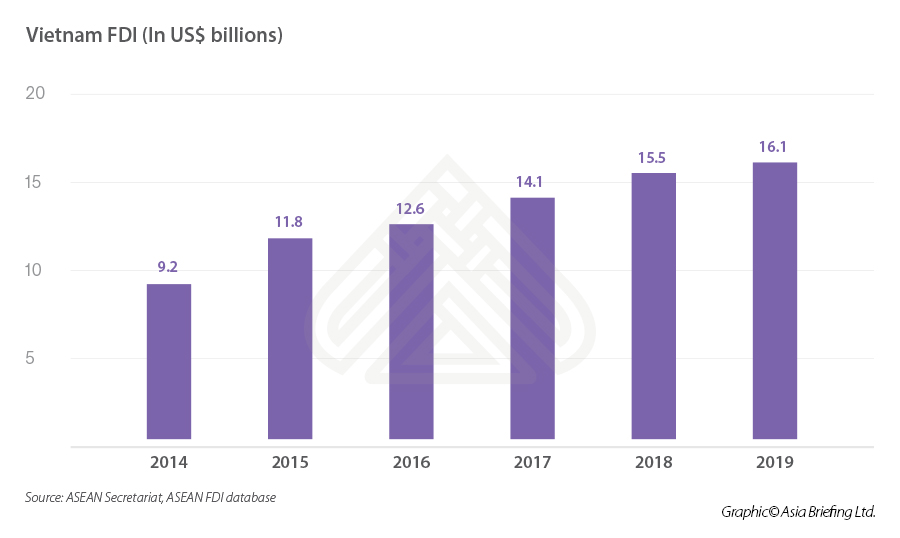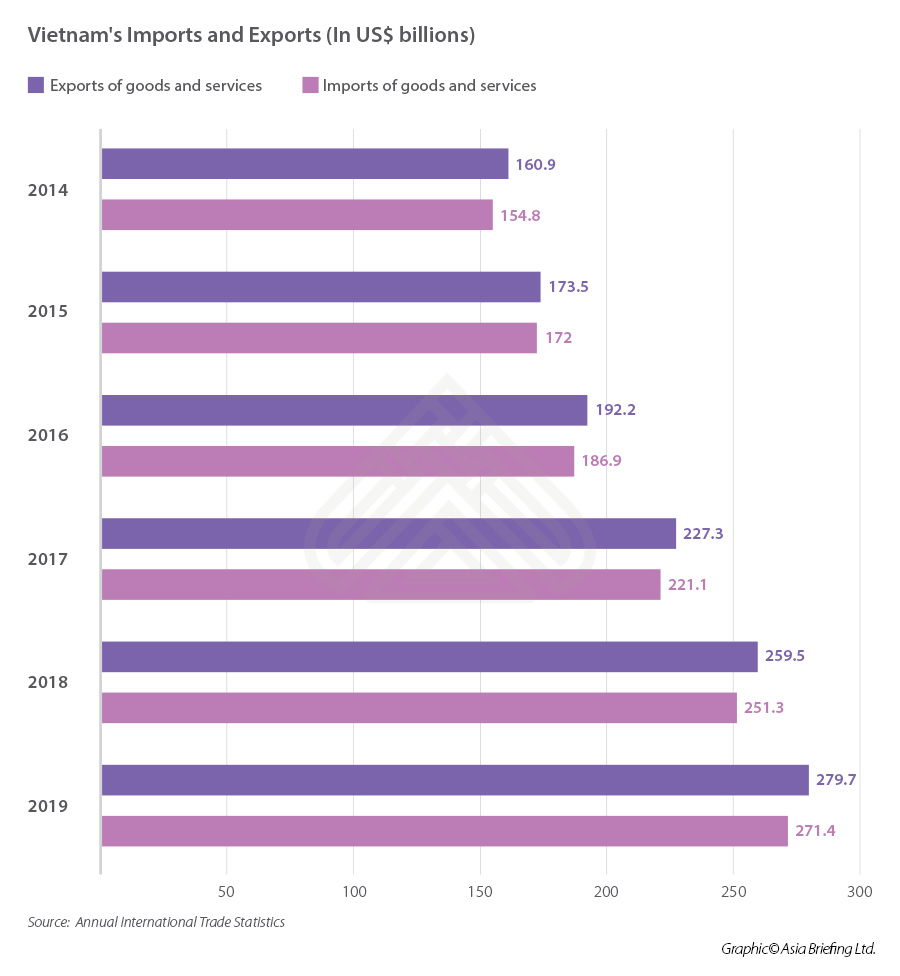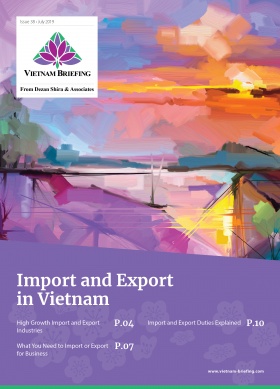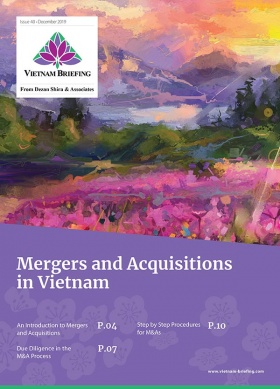How the ACIA Benefits Foreign Investors and Trade in Vietnam
- The ASEAN Comprehensive Investment Agreement (ACIA) aims at promoting trade and investment in the ASEAN region by building a free, open, and transparent investment regime.
- It is possible that the ACIA is one of the reasons contributing to Vietnam’s sustainable and substantial growth in foreign direct investment as well as in imports and exports over the years.
- The ACIA offers foreign investors significant benefits in liberalization, non-discrimination, transparency, protections, and settlement mechanism.
The ASEAN Comprehensive Investment Agreement (ACIA) is an agreement among ASEAN nations to build a fair and transparent investment regime in ASEAN, presenting the region as a single investment destination for both ASEAN investors and foreign investors. The agreement came into effect on March 29, 2012, focusing on four pillars :
- Enhancing liberalization in trade;
- Increasing protection to investors;
- Building a transparent and predictable climate for regional investment; and
- Promoting regional integration and investment.
The foundation of the ACIA is based on two previous agreements: the ASEAN Investment Area agreement (AIA) and the Investment Guarantee Agreements (IGA). The ACIA enhances the economic integration element in the two previous frameworks by implementing international best practices to protect businesses and investors, encourage member states to enforce less restrictive regulations, and authorize third-country investors to benefit from the ACIA.
Vietnam’s FDI Inflows in the 2014 – 2019 period
Over the years, Vietnam – an ASEAN member state, has been an attractive investment market for foreign investors. In 2019, the US News and World Report stated that Vietnam ranked eighth among 29 best economies for foreign investment, surpassing Malaysia (13th), Singapore (14th), and Indonesia (18th). Moreover, in 2020, according to CNBC, the country has outperformed other regional countries, including the powerful economy of China, to develop into the top-performing economy in Asia in 2020, despite the COVID-19 pandemic.
Being such a potential economy with a bright and prosperous economic outlook, Vietnam has seen resilient growth in foreign direct investment (FDI) in the last decade. The net inflows of FDI into Vietnam has grown substantially, from US$9.2 billion in 2014 to US$16.1 billion in 2019, a growth by 75 percent over the course of only five years.
In addition, Vietnam’s total imports and exports also experienced a tremendous uptrend. The country’s total exports and imports rose from US$160.9 billion in 2014 to US$279.7 billion in 2019, and from US$154.8 billion in 2014 to US$271.4 billion in 2019, respectively.
This impressive economic growth is a result of the combination of all improvements in Vietnam’s macro and microeconomics, rules, regulations, and policies. However, noted that this five-year period (2014 – 2019) is when Vietnam and other ASEAN member states began implementing liberalization policies under the ACIA. Hence, it is possible to consider the ACIA to be one of Vietnam’s economic instruments contributing to the country’s sustainable growth.
Which business sectors in Vietnam benefit from the ACIA?
Moreover, because the ACIA focuses on the liberalization of manufacturing, agriculture, fishery, forestry, mining, and quarrying, Vietnam, in particular, will benefit from this agreement because these five sectors are Vietnam’s major development areas.
To be more specific, the manufacturing sector is the area with the most substantial growth in total value-added, surging from US$24.5 billion in 2014 to US$43.2billion in 2019, having experienced a 76 percent growth in five years. Comparing this five-year period with the one before the ACIA came into effect in 2012, it was recorded that Vietnam only had a 40 percent growth from 2006 to 2011 (from US$12.8 billion to US$18.1 billion).
Hence, the enhanced foreign investment under the ACIA is likely one of the contributions to this robust growth in the manufacturing sector of Vietnam and is forecast to sustain its growth in the medium to long term.
Apart from the manufacturing sector, Vietnam’s agriculture, forestry, and fishing industry also experienced a slight growth in total value added after the ACIA was signed. The sectors demonstrated a 11 percent growth, rising from US$33 billion in 2014 to US$36.6 billion in 2019. However, this growth is not yet consequential and can be emphasized more to attract further foreign investments, aiming to bolster greater development in the sectors.
The positive effects of the ACIA on trade in Vietnam lie in the fact that the agreement offers many benefits for foreign investors and also includes improvements on previous trade policies that might attract more investment inflows into the ASEAN region and Vietnam.
Benefits for investors
The ultimate goal of the ACIA is to build a free, open, and integrated investment regime for all domestic and international investors throughout ASEAN. With that in mind, the ACIA offers a wide range of benefits for all investors, including:
- Investment liberalization;
- Non-discrimination;
- Transparency;
- Investor protection; and
- Investor-state dispute settlement.
Vietnam Briefing analyzes these benefits below:
Investment liberalization
The ACIA dictates investment liberalization in five sectors: manufacturing, agriculture, fishery, forestry, mining and quarrying, and services incidental to these five sectors. This means that these sectors are open for foreign investment, and investors will have the opportunity to develop new and emerging markets for their products and services throughout all ASEAN member states.
Under this section, ASEAN member states reached an agreement to bolster effective collaboration with other member states, by:
- Exchanging information regarding investment rules, regulations, and policies;
- Improving cooperation among government authorities and ministries;
- Enhancing of consultation with private sector stakeholders to promote foreign trade and investment;
- Improving of transparency in procedures for investment approvals and application;
- Promote intra-ASEAN investment, especially the flow from the ASEAN-6 (Brunei, Indonesia, Malaysia, the Philippines, Singapore, and Thailand) to other less developed countries;
- Focus on protecting and facilitate growth and the development of small and medium enterprises; and
- Support joint venture incentives, emphasizing regional integration and connection.
Non-discrimination
One of the most significant benefits of the ACIA is that the agreement explicitly promotes fair and equal treatment to all investors. The agreement states that all member states are obliged to follow the practices of:
- National Treatment and Most-Favored-Nation Treatment: through which member states are prohibited to enforce unfair prejudice or biased regulations towards foreign investors and products;
- Senior Management and Board of Directors: which grants all ASEAN investors the right to choose senior management personnel of their preference to control their investments in ASEAN, irrespective of their nationalities.
- No Performance Requirements: which states that all ASEAN member states are prohibited from enforcing any manufacturing quota or export limits on other member states.
Transparency
Under the ACIA, all investors benefit from transparent, consistent, and predictable investment regulations and policies. Specifically, the ACIA includes:
- Coordination of investment regulations, which promotes the convergence of investment policies;
- Streamlined and clarified regulations for investment applications and approvals; and
- Publication of information on procedures and policies relevant to all investors and their investments in the ASEAN region.
Investor protection
The ACIA plays a significant role in enhancing ASEAN investment because they offer all investors advanced protection compared to the previous ASEAN investment framework. To elaborate, the ACIA provides investors with:
- Fair and equitable treatment: all member states must comply with proper laws and regulations towards foreign member states, and are not allowed to impose dictatorial policies.
- Full protection and security: the host country is required to provide necessary protection and security to foreign investments at all times, including during anarchy or strife. In the event that the foreign member state encounters losses on their investment due to riots or insurgency, the host nation is required to provide the investors with proper and non-discriminatory compensation.
- No unlawful expropriation: if a member state conducts expropriation towards other member states during the course of the investment, the member state will be liable to pay for compensation.
- Free transfer of funds: all member states must allow their investors to transfer funds relevant to covered investment freely and without any delay into and out of the host country’s territory.
Investor-state dispute settlement mechanism
The ACIA also provides foreign investors protection in case of conflicts with host nations. Accordingly, investors have the right to negotiate their discord through:
- Alternative settlement mechanisms: investors can use mediation, conciliation, and consultation, and negotiation to settle their conflicts with the host government;
- Domestic courts: investors can resort to domestic courts and tribunals to resolve the conflict; or
- Binding international arbitration: investors can refer to other international arbitrations such as the United Nations Commission on International Trade Law (UNCITRAL), the International Centre for Settlement of Investment Disputes (ICSID), or any other agreed regulations.
The five benefits that the ACIA offers foreign investors play a major role in enhancing investment opportunities in Vietnam. With improvements in liberalization, transparency, equality, protection, and settlement mechanisms on investment framework, Vietnam is looking at a bright economic outlook with a sustainable uptrend in FDI and trade activities in the medium to long term.
About Us
Vietnam Briefing is produced by Dezan Shira & Associates. The firm assists foreign investors throughout Asia from offices across the world, including in Hanoi and Ho Chi Minh City. Readers may write to vietnam@dezshira.com for more support on doing business in Vietnam.
- Previous Article Vietnam’s Approval of Fourth Protocol in ASEAN Comprehensive Investment Agreement Promotes Regional Trade and Investment
- Next Article Bac Giang: An Emerging Investment Destination

































